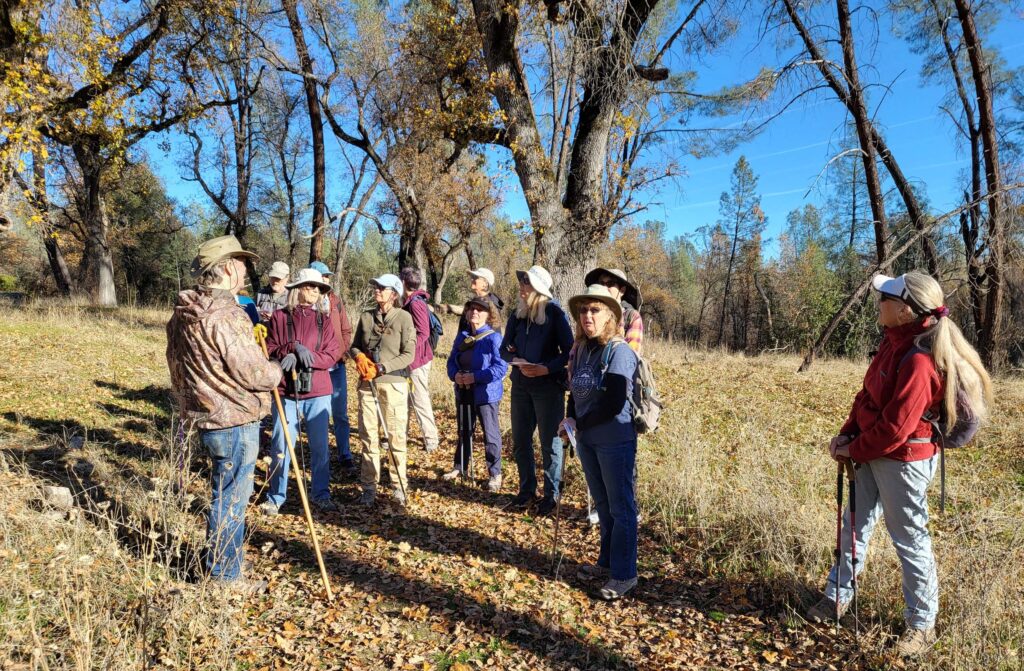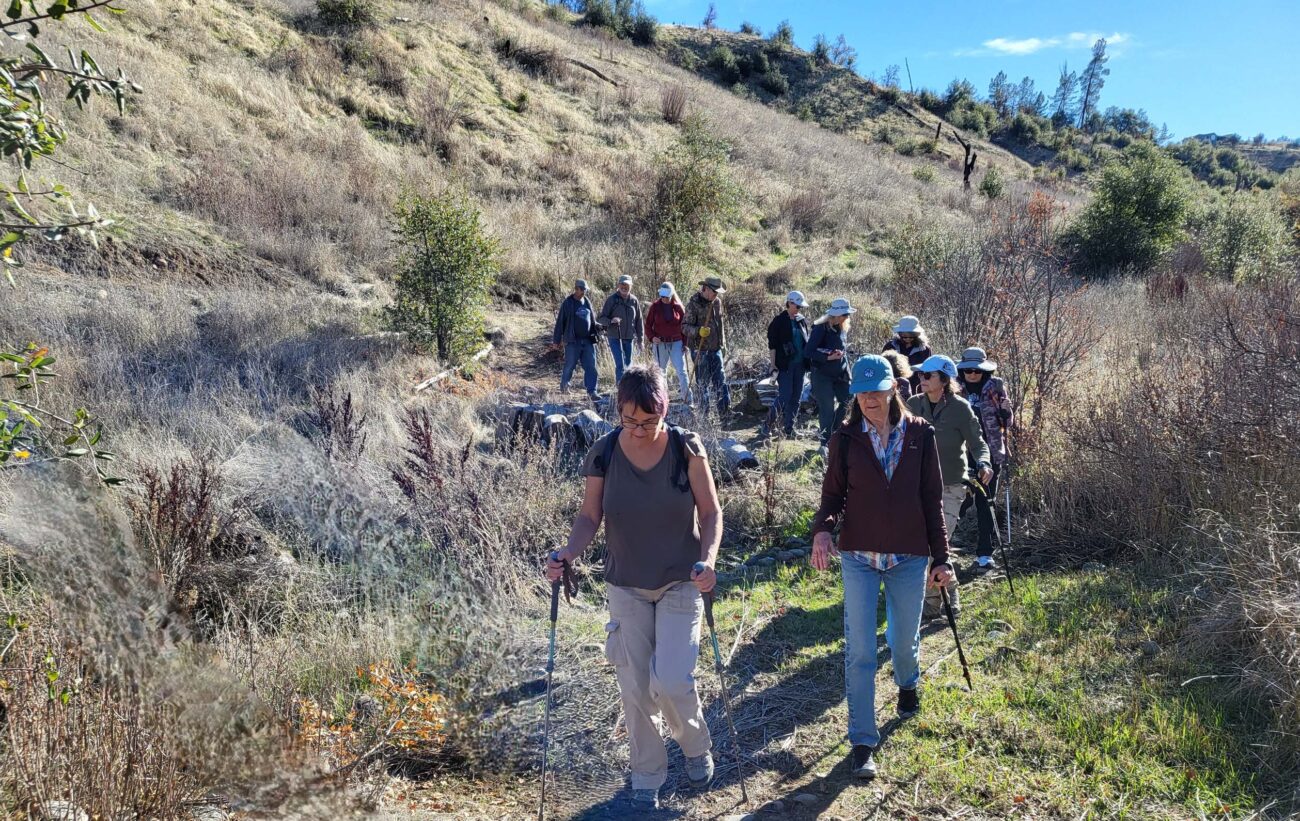
Horsetown-Clear Creek Preserve (HCCP) Board member Lisa Ross led a joint field trip for Shasta Environmental Alliance (SEA) and California Native Plant Society’s (CNPS) Shasta Chapter at the Preserve, just southwest of Redding. Sixteen people showed up for this easy walk of about two miles on a seldom-used loop trail that follows a seasonal stream.
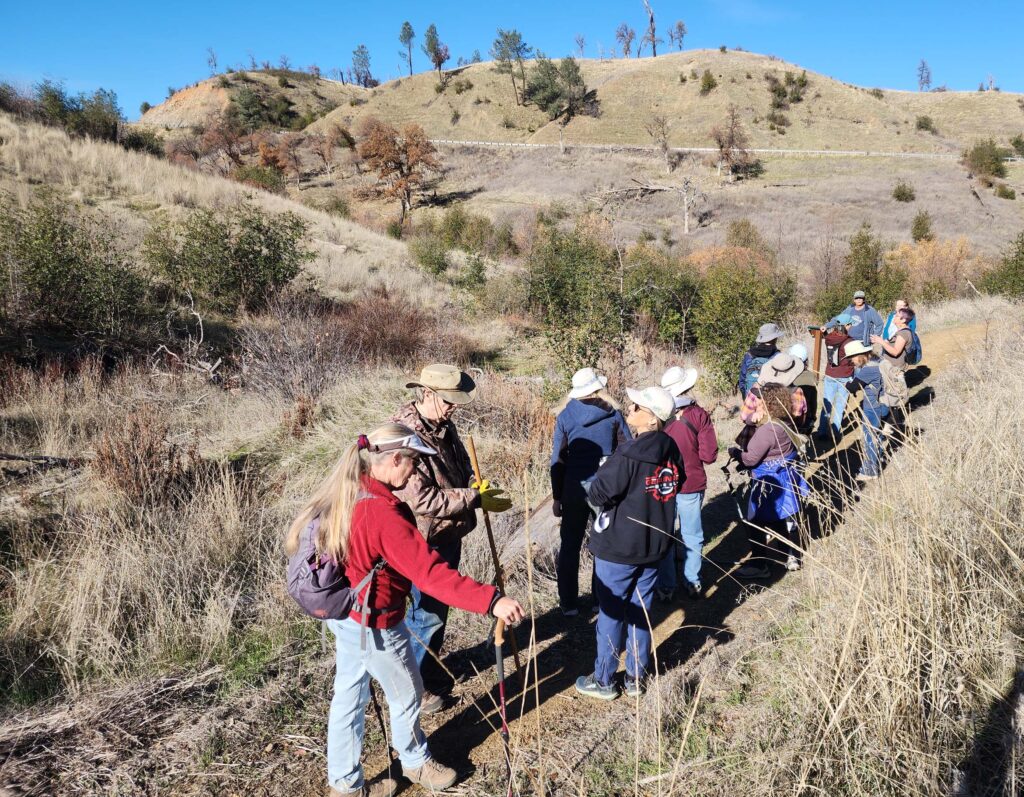
Lisa, who is Secretary for HCCP, explained the work that they have been doing, their plans to rid the area of invasive plants, and their goal to plant more native species. One hillside that used to be covered with lupines that bloomed profusely every spring is now thick with three-foot-high yellow star-thistle. Targeted for replanting, this hillside could once again support a stunning field of lupines and milkweeds.
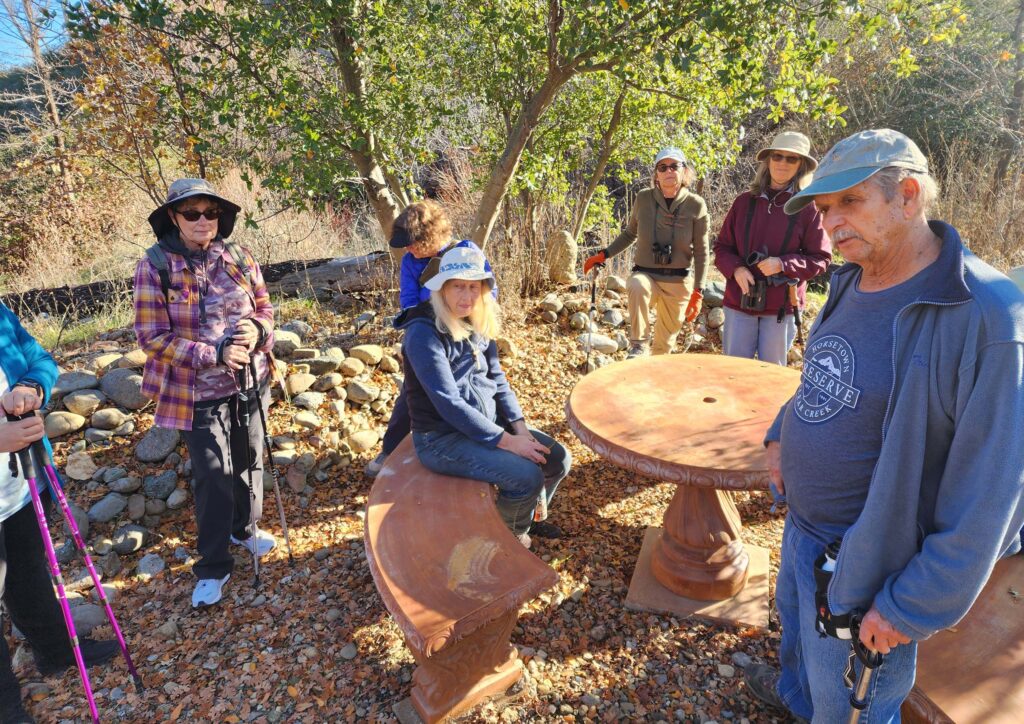
Don Burk, President of Shasta Chapter CNPS, identified about 30 plants that are not on the current HCCP plant list. Being December, a few plants were difficult to identify and it took the combined wisdom of a few of us to figure some of them out.
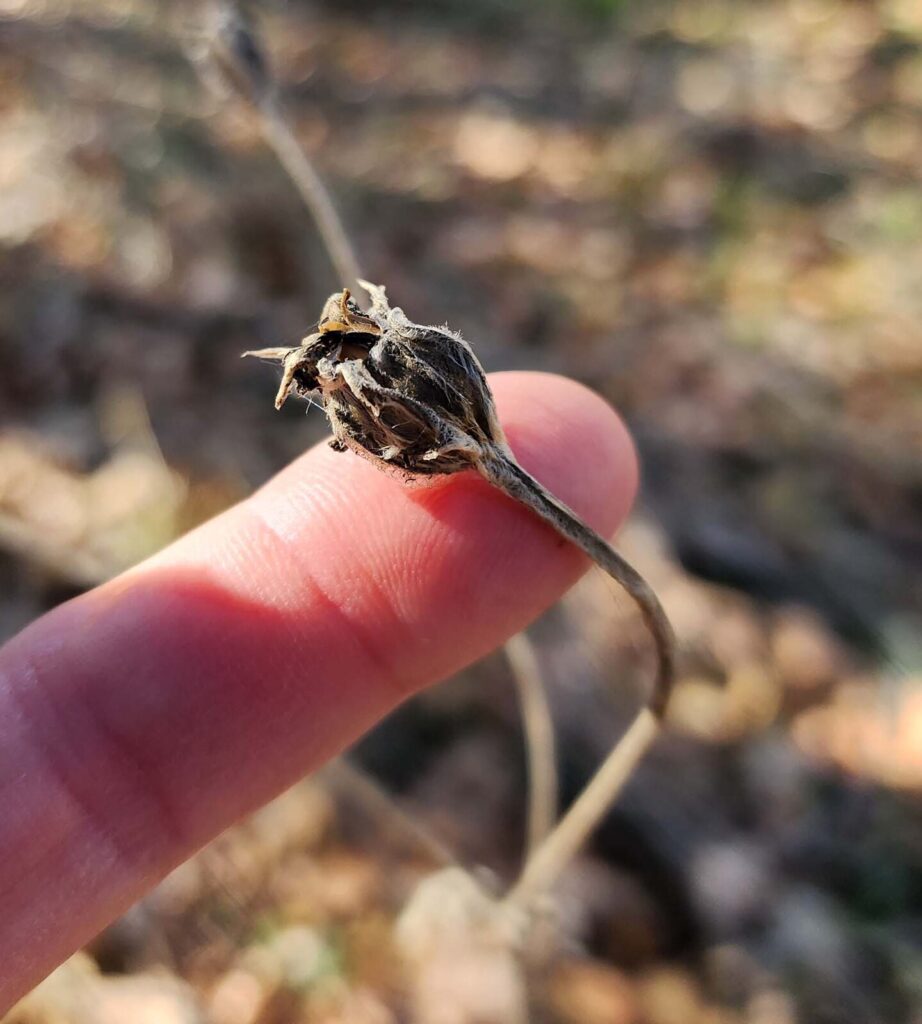
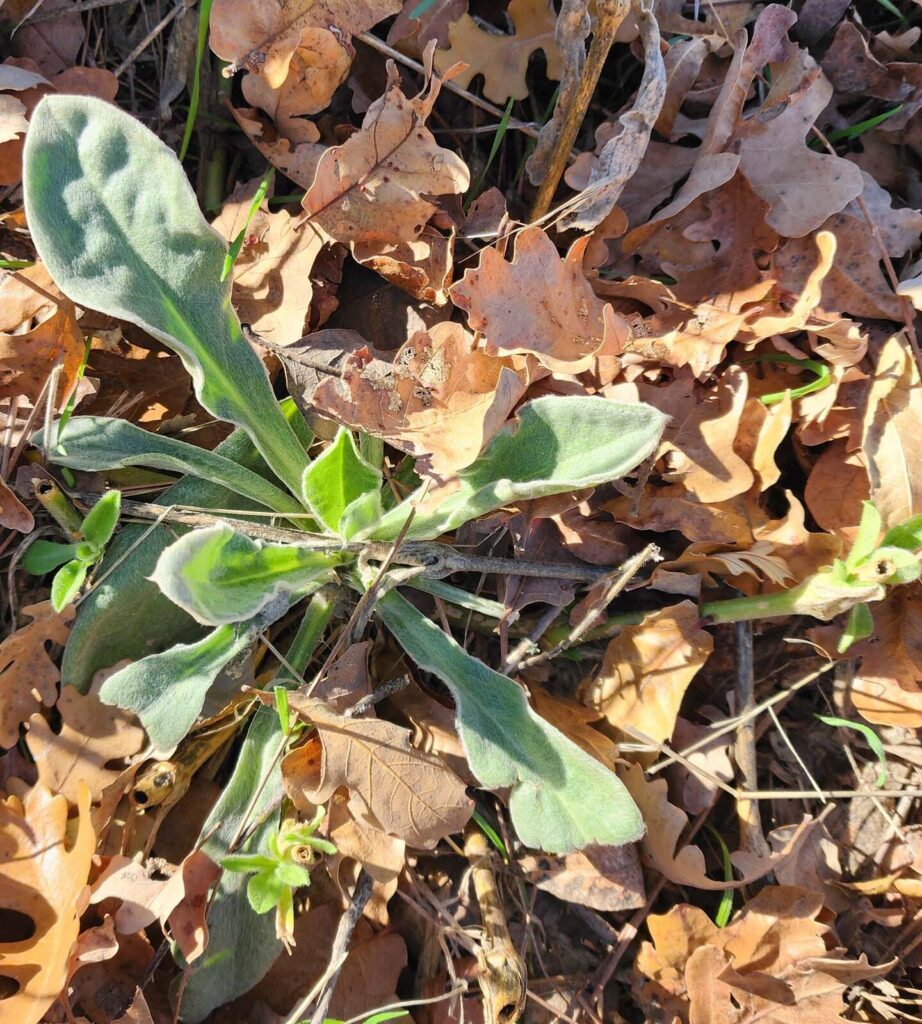
We did see a few unusual plants for the area, such as wand mullein (Verbascum virgatum), a non-native plant that looks similar to the non-native moth mullein (Verbascum blattaria). We also saw one young knobcone pine, a species that, since the Carr Fire, has really spread into places where mother trees have not previously been noted. Speculation is that viable seeds can remain dormant over 100 years. This young tree could have sprouted from a seed that has been lying in the soil for a century, and the heat or chemical reactions from wildfire caused the seed to finally germinate.
The field trip ended by walking up Clear Creek to look at the riparian areas and to hear about the importance of Clear Creek restoration to salmon and steelhead trout. This was an enjoyable walk with a friendly group of people on one of the lesser-used trails in the area. Thank you, Lisa! ~David Ledger
